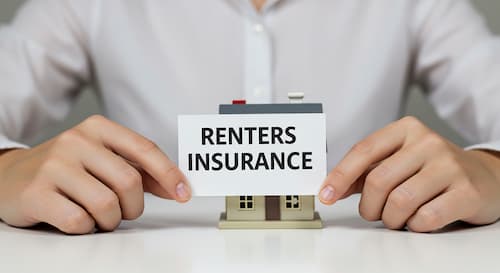How common are uninsured or underinsured structures?
At ZestyAI, we recently analyzed one million properties across the U.S. using advanced AI and aerial imagery. What we found was surprising: Nearly half (45%) of homes had at least one additional structure that may not be properly accounted for in their insurance policy.
While 55% of properties feature only a single structure, a notable 31% have two structures, 11% have three, and 4% contain four or more structures. These additional structures include detached garages and sheds or outbuildings used for agriculture or other purposes.
This means millions of homeowners could face unexpected financial burdens if an uncovered structure is damaged or destroyed.
Why are these structures often overlooked?
There are a few key reasons why additional structures might not be properly insured.
- Lack of awareness: Many homeowners assume that all structures on their property are automatically covered under their main policy, which is often not the case. Coverage for detached structures can be limited.
- Insurer oversight: Traditional methods of assessing a property, such as basic records or self-reported details, may not capture every structure, particularly smaller sheds or recently added outbuildings.
- Regional factors: In rural areas or states with more agricultural land, secondary structures are more common. For example, in Montana (59%) and Wyoming (58%), multi-structure properties are the norm, while states like Georgia (26%) and North Carolina (29%) have fewer additional structures.
| State | % of Properties With Secondary Structures |
|---|---|
| Montana | 59% |
| Wyoming | 58% |
| Wisconsin | 57% |
| Rhode Island | 56% |
| California | 55% |
| Maine | 53% |
| New Mexico | 53% |
| New York | 52% |
| Idaho | 52% |
| Oklahoma | 51% |
| Utah | 51% |
| Washington | 50% |
| New Hampshire | 50% |
| Michigan | 50% |
| Illinois | 50% |
| Vermont | 49% |
| Oregon | 48% |
| Iowa | 48% |
| Minnesota | 48% |
| Connecticut | 48% |
| Louisiana | 48% |
| Ohio | 48% |
| North Dakota | 47% |
| New Jersey | 47% |
| Massachusetts | 47% |
| Indiana | 47% |
| South Dakota | 47% |
| Texas | 46% |
| Kentucky | 46% |
| West Virginia | 45% |
| Delaware | 45% |
| Pennsylvania | 44% |
| Arizona | 43% |
| Nevada | 42% |
| South Carolina | 41% |
| Colorado | 41% |
| Alabama | 39% |
| Virginia | 38% |
| Arkansas | 38% |
| Tennessee | 38% |
| Missouri | 38% |
| Nebraska | 38% |
| Kansas | 37% |
| Maryland | 37% |
| Mississippi | 35% |
| Florida | 32% |
| North Carolina | 29% |
| Georgia | 26% |
*Some state rates will vary based on the addition of a hurricane deductible and may be much higher when included.
How to make sure you’re properly covered
To avoid being underinsured, homeowners should take the following steps.
- Review your policy: Check your homeowners' insurance policy for ‘Other Structures’ coverage. Many policies cap this coverage at 10% of the insured value of the main home, which may not be enough.
- Document every structure: Take photos of all buildings on your property and note their dimensions and materials. This will help your insurer assess coverage accurately.
- Ask your insurer for a coverage review: If you’ve recently added or renovated a structure, notify your insurance provider to ensure it's included in your policy.
How does home insurance work for other structures?
Other structures coverage is a standard part of an HO-3 homeowners insurance policy, which most people purchase to protect their homes. It’s listed on your policy as Coverage B.
Coverage B is set as a percentage of your dwelling coverage (also known as Coverage A), and your dwelling coverage is based on the replacement cost of your home. That means it’s vital that your replacement cost calculation be accurate.
On a standard HO-3 policy, Coverage B is set at 10% of Coverage A. So, if your dwelling coverage is set at $400,000, your other structures coverage is $40,000. That’s the most your insurance company will pay in a claim, and if it’s not enough, you can increase the coverage by contacting your insurance company.
Avoid underinsuring other structures: The bottom line
The structures on your property play an important role in your home’s value and risk profile. A simple policy review could save homeowners thousands of dollars in uncovered losses. By understanding the coverage gaps that exist and taking proactive steps, homeowners can protect their property more effectively and avoid surprises when they need coverage most.






